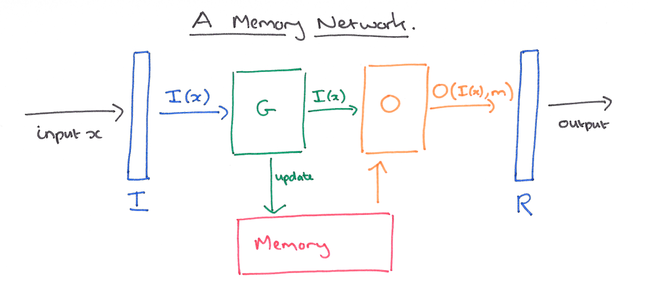Dialog-based Language Learning: Difference between revisions
| Line 13: | Line 13: | ||
==Background on Memory Networks== | ==Background on Memory Networks== | ||
[[File:memory-network.png|center|650px]] | |||
==Related Work== | ==Related Work== | ||
==Dialog-based Supervision tasks== | ==Dialog-based Supervision tasks== | ||
Revision as of 11:08, 7 November 2017
Note: Do not start editing until 8th Nov 2017
This page will be published for editing by EOD 7th Nov 2017 This page is a summary for NIPS 2016 paper - Dialog-based Language Learning by Jason Weston[1].
Introduction
One of the ways humans learn language, especially second language or language learning by students, is by communication and getting its feedback. However, most existing research in Natural Language Understanding has focused on supervised learning from fixed training sets of labeled data. This kind of supervision is not realistic of how humans learn, where language is both learned by, and used for, communication. When humans act in dialogs (i.e., make speech utterances) the feedback from other human’s responses contain very rich information. This is perhaps most pronounced in a student/teacher scenario where the teacher provides positive feedback for successful communication and corrections for unsuccessful ones.
This paper is about dialog-based language learning, where supervision is given naturally and implicitly in the response of the dialog partner during the conversation. This paper is a step towards the ultimate goal of being able to develop an intelligent dialog agent that can learn while conducting conversations. Specifically this paper explores whether we can train machine learning models to learn from dialog.
Contributions of this paper
- Introduce a set of tasks that model natural feedback from a teacher and hence assess the feasibility of dialog-based language learning.
- Evaluated some baseline models on this data and compared them to standard supervised learning.
- Introduced a novel forward prediction model, whereby the learner tries to predict the teacher’s replies to its actions, which yields promising results, even with no reward signal at all
Background on Memory Networks
